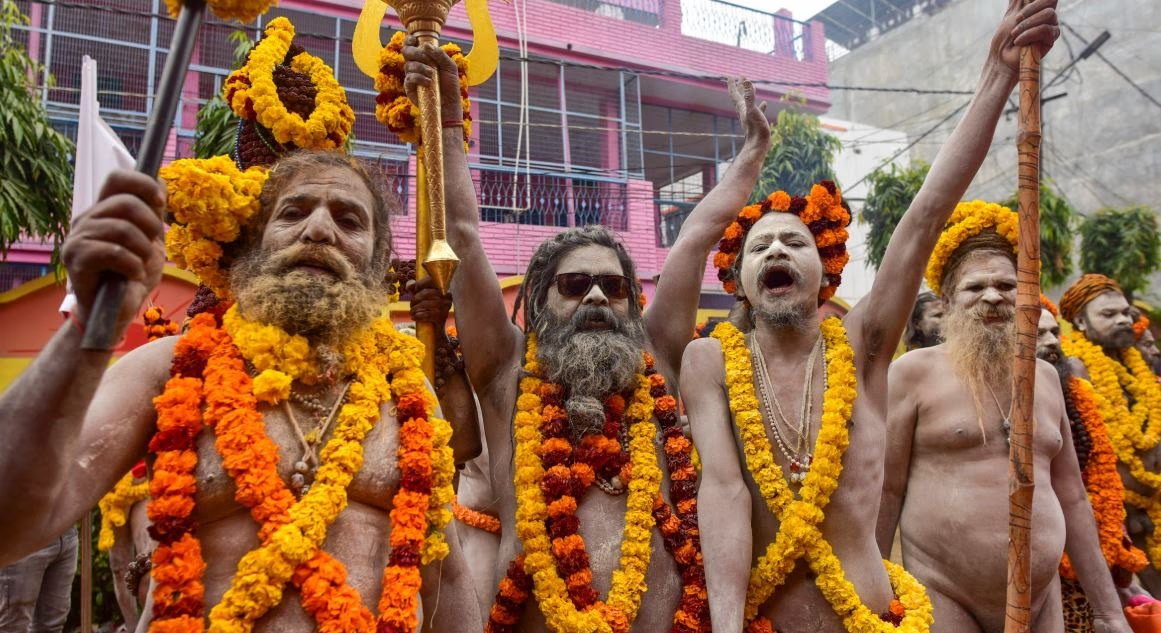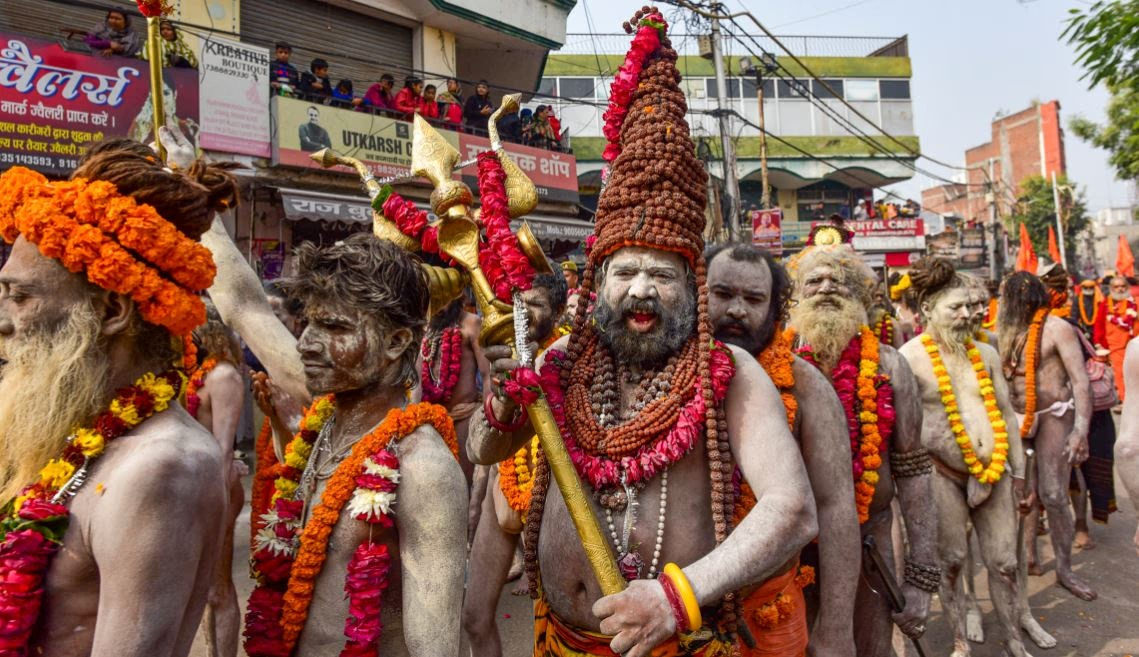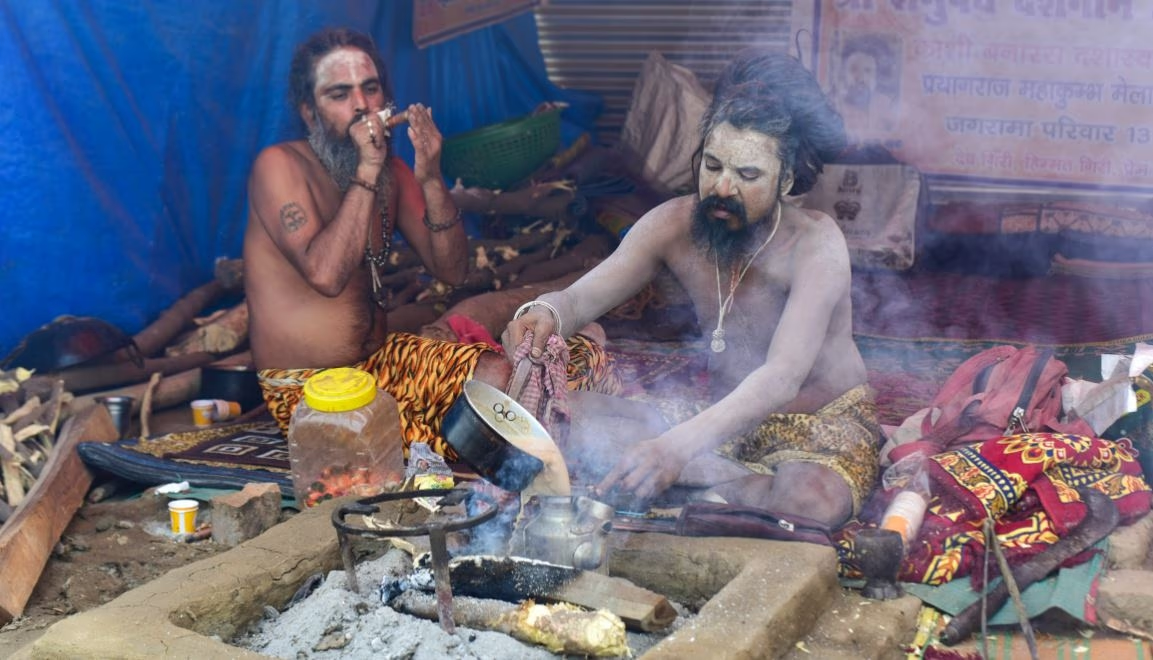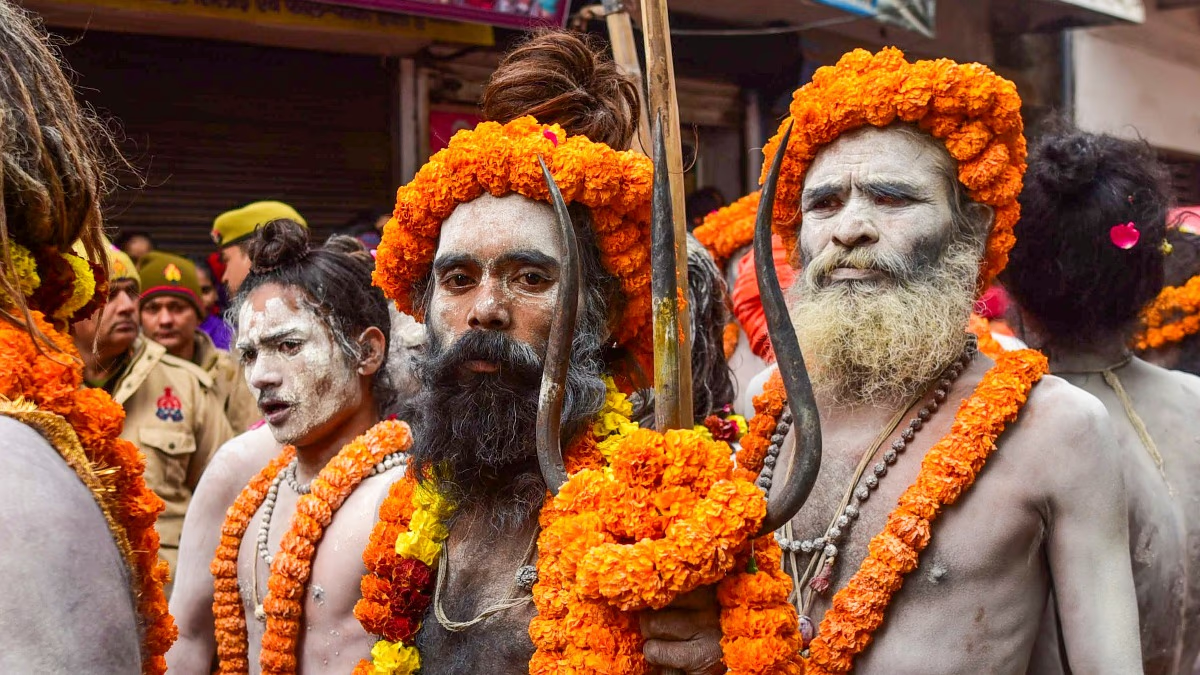The grand spectacle of the 'Maha Kumbh', the world's largest human congregation, is about to commence in Prayagraj, Uttar Pradesh. With over 400 million visitors anticipated this year, robust security measures have been established. Alongside the throngs of devotees, the Kumbh Mela will host countless sadhus, drawing special attention in preparation for them. Yet, the mysterious Naga Sadhus, iconic figures of the Kumbh, consistently capture the imagination. Picture the Kumbh without them, and it becomes unimaginable. Let us unveil the journey of a monk to become a Naga Sadhu, and trace the origins of this unique tradition.
The Aura of Naga Sadhus at the Kumbh
During the Kumbh, various 'Akharas' host the revered 'Amrit Snan' for Naga Sadhus. Female Naga Sadhus adorn saffron robes, never appearing publicly unclothed. While male Naga Sadhus maintain long hair, their female counterparts embrace shaved heads, adhering to strict celibacy. The congregation of female ascetics traverses from near and far to partake in this spiritual gathering at the Kumbh.
Mahant Divya Giri of the Kumbh elaborates on the enduring tradition of Naga Sadhvis. Initially part of the Juna Akhara, they now organize under a distinct branch. As with their male counterparts, Naga Sadhvis follow a rigorous code. Participation in the Amrit Snan remains the focal attraction of every Kumbh.

Source: aajtak
Having devoted their lives to intense asceticism, the divine Naga Sadhus distinguish themselves through a unique appearance: their bodies covered in sacred ash and clad in ochre robes. Their presence is emboldened by the tripundra on their foreheads, rudraksha beads around their necks, and a trident in hand. Most Naga Sadhus revere Shiva and Shakti, embarking on their spiritual path by severing worldly attachments and family ties, earning them the prestigious title of Naga.
The Origins of Naga Tradition
Thanapati Ghananand Giri from the Juna Akhara explains that only those who receive the honorific 'Naga' from the ascetic community and Shankaracharya are allowed to remain as Naga ascetics. Those termed 'Naga Digambar' rally to propagate faith when called, whereas 'Shri Digambar' maintain their disposition at all times. However, what drives an ascetic who symbolically performs their own last rites?
Though sparse in literary accounts, history documents Naga Sadhus as warriors who have confronted adversaries whenever faith was threatened, often with armed resolve. Their exploits include grand battles to preserve Sanatan Dharma.
Religious chronicles record that in the 8th century, when relentless attacks on Sanatan faith and temples prevailed, Adi Guru Shankaracharya established four monasteries to safeguard the religion. Realizing that scriptures alone could not protect tradition, he introduced the akhara system, wherein devoted ascetics honed their martial skills; Naga Sadhus emerged as its guardians.

Source: aajtak
Naga Sadhus: Guardians of Faith
Naga Sadhus have deliberately embraced an austere way of life to withstand adversities and protect their religion. Only through struggle can one remain steadfast in this sacred duty. Historical narratives recount that when Ahmad Shah Abdali's ruthless campaign reached India in the 18th century, inflicting terror as he besieged spiritual hubs like Gokul and Vrindavan, it wasn't the ruling kings but the reclusive Naga Sadhus from the Himalayas who dared to challenge his tyranny.
Contemporary chronicles like gazetteers mention that around 1751, Ahmad Khan Bangus targeted the Fort of Allahabad during the Kumbh, besieging it. Amidst the chaos, thousands of Naga monks, initially immersed in holy rituals, stood armed to repel Bangus's forces. The three-month conflict ended with Bangus retreating and Prayagraj sanctified. Naga Sadhus, prepared to go where others could not, ensured adversarial stalemates transformed into triumphant narratives by relying on spiritual might or sheer will.
When Aurangzeb attacked during the Haridwar Kumbh festival in 1666, once again, it was the Naga ascetics who rallied in defense. Tales recount the ultimate sacrifices made by Naga Sadhus, immortalized in fabled battles at Jodhpur and encounters with Tamerlane. Their valiance safeguarded spiritual honor, a resolve carried forward even after India's independence. For present-day protection duties lie with the nation's brave soldiers, yet Naga Sadhus continue honing martial skills as advised by their revered Gurus.

Source: aajtak
Embracing Ashes of Mortality
Two types of Naga ascetics emerge from the initiation: the clothed 'Digambar Naga Sadhus' and the wholly unclothed 'Shri Digambar Naga Sadhus'. Digambar Naga Sadhus wear minimal attire, while those of Shri Digambar discard all clothing, embodying ultimate renunciation. The latter path demands the highest discipline as worldly detachments require sublimation of all sensory faculties. For these driven souls, ash represents impermanence and serves as a shield, reducing discomfort for those approaching these mystical figures.
Throughout the Kumbh, new Naga Sadhus are made, and their monikers vary based on location: those initiated at Prayagraj become 'Naga', in Ujjain 'Khooni Naga', in Haridwar 'Barfani Naga', and in Nashik 'Khichadiya Naga'. Responsibilities within the community are hierarchical, starting from Kotwal, Pujari, Bhandari, to the prestigious rank of Secretary, the most crucial of roles. Some Naga Sadhus dwell in temples, while others reside in caves. With Arakana orders, these ascetics traverse by foot, often establishing transient dwellings accompanied by sacred fires.

Source: aajtak
The ashes the Naga Sadhus adorn sometimes derive from cremation grounds or their sacred fires, aligning with their deep-seated belief systems. Misunderstandings arise due to lack of cultural context surrounding their ascetic practices, such as their custom of remaining unclothed, analogous for Naga females in their devout nudity to counterparts.
The Life of a Naga Goddess: Female Ascetics
Curiosity persists about the essentially masculine portrayal of Naga Sadhus and the rarity of female Naga Sadhvis. Addressing this, Mahant Divya Giri of the Juna Akhara states that female Naga Sadhvis, while they exist, adapt with respect to societal norms, thus remain away from public view. They dwell in seclusion privately or have discrete accommodations during the festival. Recognizing their contribution, the convention of female akharas initiated for the 2013 Kumbh has since grown, inviting Naga Sadhvis to partake in this grand spiritual festival.
Performing Their Own Last Rites
Naga Sadhu Maniraj Puri, hailing from Haridwar, recounts leaving home at 13 and residing in the Uttarakhand mountains. Through rigorous processes, he completed his transformation, having studied during his sanctuary journey. Now, he dedicates himself entirely to Sanatan tenets and human welfare.
Naga Sadhu Maniraj Puri narrates that the path isn't easy. The Naga journey begins with symbolic self-cremation and personal rites, culminating in the critical 'linga breaking' to master ceaseless desires. The process ensues in secrecy among Naga initiates, with specific methodologies left undisclosed, confidential within their enigmatic order.
At the Kumbh, the sacred Amrit Snan opens with Naga Sadhus, considered purer due to their ascetic renunciations. Following their immersion, fellow ascetics and devotees partake in the cleansing ritual. Once the Kumbh concludes, Naga Sadhus cover themselves with sacred earth and retreat to solitude, surfacing again only during successive Kumbh gatherings for the next spiritual convergence.




